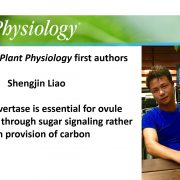
Recognizing Plant Physiology authors: Shengjin Liao
Shengjin Liao, first author of Cell wall invertase is essential for ovule development through sugar signaling rather than provision of carbon
Current Position: Assistant Professor, Beijing Academy of Agriculture and Forestry Sciences (BAAFS)
Education: PhD in Biological Sciences, B. Biotech (Hons)…
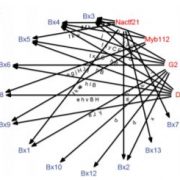
Drawing in the Net: Forty-Five Maize Gene Regulatory Networks from Over 6,000 RNA-Seq Samples
Eukaryotic gene expression is largely governed by transcription factors (TFs), the nuclear proteins that bind to specific DNA sequences and determine when and where genes are turned on. Transcriptional gene regulatory networks (GRNs) that modulate developmental processes and environmental responses consist…
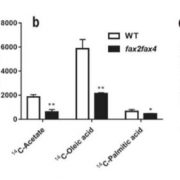
A well-oiled machine: two fatty-acid exporters involved in seed oil biosynthesis
A well-oiled machine: two fatty-acid exporters involved in seed oil biosynthesis
Mehran Dastmalchi
mdastmalchi@brocku.ca
Oilseed plants such as canola (Brassica spp.) are a massive, multi-billion dollar industry, with their lipids contributing to food, cosmetics, polymers and biofuels. For the…
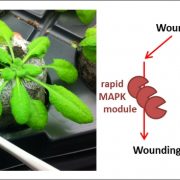
Ouch! Plant perception of wounding
Sözen et al. describe two independent MAPK signaling cascades that are each activated with different kinetics, providing an immediate and delayed response to herbivore feeding. The Plant Cell (2020) https://doi.org/10.1105/tpc.19.00917
By Cécile Sözen, Marie Boudsocq and Jean Colcombet, Université…
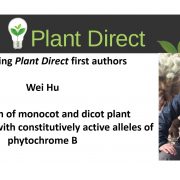
Recognizing Plant Direct authors: Wei Hu
Wei Hu, first author of Regulation of monocot and dicot plant development with constitutively active alleles of phytochrome B
Current Position: Assistant project scientist at Prof. J. Clark Lagarias’ Laboratory, Department of Molecular and Cellular Biology, University of California Davis, USA
Education:
PhD,…
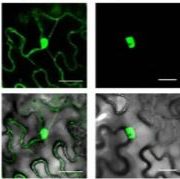
Tuning to the signal of stress: sub-cellular regulation of abscisic acid receptor abundance by E3 ubiquitin ligases
Magdalena M. Julkowska
Magdalena.Julkowska@kaust.edu.sa
Developmental and environmental changes are communicated systemically throughout the plant by various signals, ranging from electric currents to plant hormones. As the responses elicited by the systemic signals depend on the tissue…
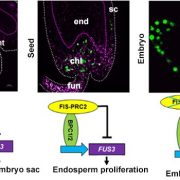
Repression of FUSCA3 by BASIC PENTACYSTEINE PROTEINS promotes ovule development and coordinates embryo and endosperm growth
Wu et al. found that FUSCA3, which regulates seed development, is localized to specific cells of the ovule and seed coat and is itself regulated by BASIC PENTACYSTEINE (BPC) proteins. Plant Cell https://doi.org/10.1105/tpc.19.00764
By Sonia Gazzarrini (University of Toronto, Dept. Biological Sciences…
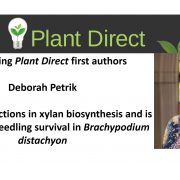
Recognizing Plant Direct authors: Deborah Petrik
Deborah Petrik, first author of BdGT43B2 functions in xylan biosynthesis and is essential for seedling survival in Brachypodium distachyon
Current Position: Visiting Assistant Professor of Biology, Rhodes College, Memphis, TN
Education:
PhD in Biological Sciences, Illinois State University, 2015
M.S.…
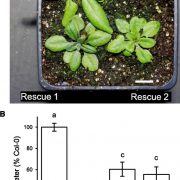
Certain Flippases Are Important for Vegetative Growth
Lipid flippases hydrolyze ATP to flip lipids across a membrane bilayer toward cytosolic facing leaflets, whether that be from the outer leaflet of the plasma membrane (PM) or luminal leaflet of internal membranes. Flippases are proposed to be involved in multiple processes, such as flipping specific…

